Heavy truck traffic is shaking Old Louisville's historic homes. Can a new ordinance help?
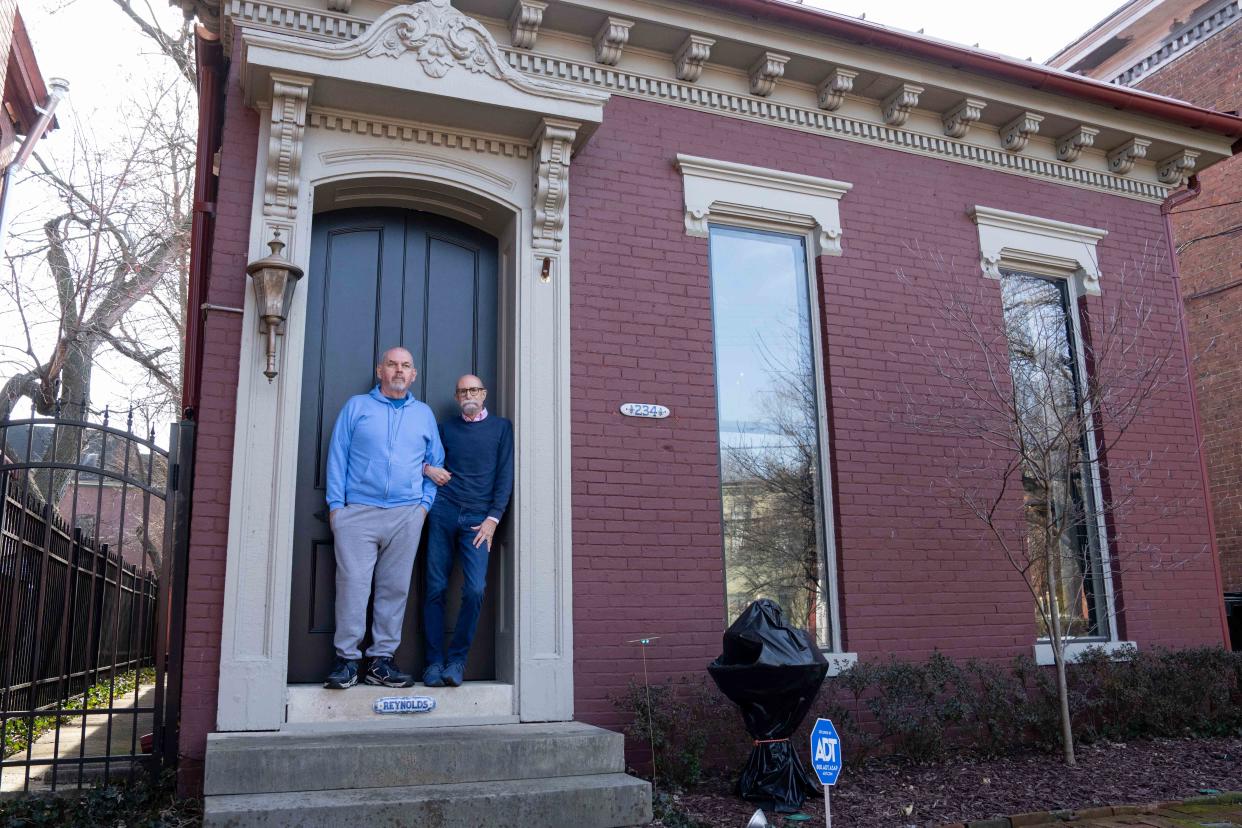
Dishes rattle in the kitchen and artwork shifts on the walls of Mark and Bill Reynolds' 140-year-old Old Louisville home whenever a heavy truck barrels down Oak Street.
Their carefully preserved, Italianate-style cottage was built before Louisville's streets carried any automobiles.
But in recent years, as the industrial presence just west of the neighborhood has grown, heavy truck traffic on Oak and St. Catherine streets has proliferated, Mark, Bill and other residents told The Courier Journal.
These two streets offer truck drivers a shortcut to and from the interstate, rather than using Ninth Street, a major arterial road, for access.
"I chose this neighborhood because I wanted to live in an urban environment, which gives me walkability, gives me access, convenience, and gives me architecture. That's why I moved here 35 years ago," Mark said. "But a few years ago, it changed. It changed from urban to industrial, and that's an entirely different environment to live in."
As heavy truck traffic has ramped up in recent years, the couple has noticed cracks forming in multiple walls around the house where there hadn't been problems before. They consistently see semis, grain trucks, scrap haulers and other heavy vehicles, which can weigh tens of thousands of pounds, passing by, and they worry about damage from the resulting vibrations.
"It feels frightening to have the volume of trucks and the size of trucks come right here, so close to our house and to our sidewalk," Mark said. "That's not what I bargained for."
In response, residents have campaigned against the industrial intrusion in the neighborhood, planting yard signs calling on operators to “please respect our historic residential neighborhood” and use Ninth Street instead. They’ve had luck getting through to some companies, like Rumpke, which operates a waste and recycling facility near 11th and Oak streets.
In the past, residents have set out to count each heavy truck passing by, recording dozens per hour some mornings. These numbers have improved with the neighborhood’s pushback, but the problem has persisted.
In addition to worries about damage from vibrations, residents have also raised concerns about air and noise pollution from the industrial traffic.
Missy Vitale, who lives down the street from Mark and Bill, said she and other residents have been in contact with their metro councilperson, Phillip Baker, about the issue.
And Baker said he has an initial draft of an ordinance that would restrict heavy truck traffic on certain streets, including priorities for Oak and St. Catherine, extending Louisville’s current list of routes with heavy truck restrictions.
Fear for historic homes
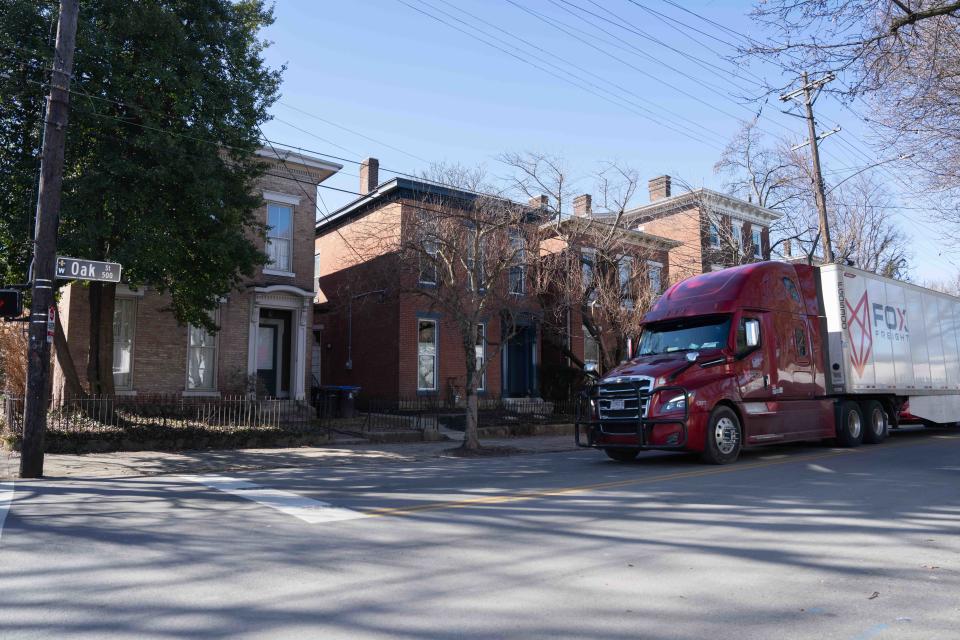
Vitale has lived on Oak Street for the last 13 years.
She moved back from Chicago after living a block away in the 1980s, while she attended graduate school at the University of Louisville. She loves Old Louisville, but says it has come to be undervalued.
“Louisville doesn’t recognize this neighborhood as the gem it is,” Vitale said.
Often awakened early in the morning by trucks rumbling through the neighborhood, Vitale is considering leaving Old Louisville if the problem doesn’t ease soon.
“They fly through Oak,” she said. “They’re coming through 40, 45 miles an hour, hitting divots, shaking houses…”
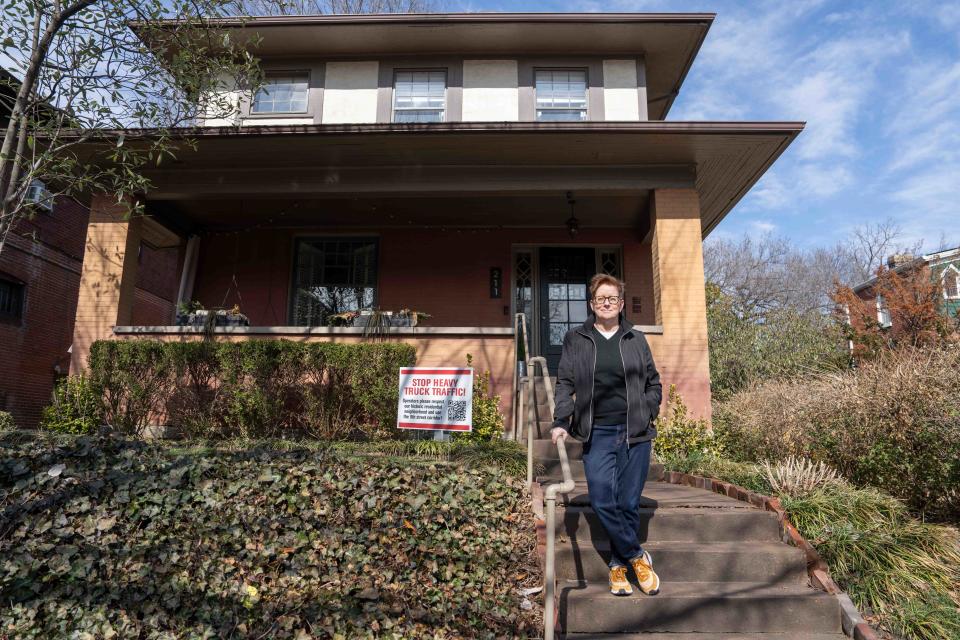
It’s impossible to directly connect heavy truck traffic to damage to homes, according to Mark McGinley, a professor of civil engineering at the University of Louisville with expertise in masonry building systems and historic preservation.
The historic buildings lining the streets of Old Louisville “have been moving their entire lives,” he said. “Homes move.”
This happens for a variety of reasons, like changes in soil saturation and can contribute to damage to buildings.
"There's movement in the soil underneath the home, and that's going to cause it to settle differentially," McGinley said. "And that's what's causing cracking."
But strong enough vibrations from truck traffic have the potential to accelerate the movement in the soil, he added, and proximity to the street could make a home more susceptible to this effect.
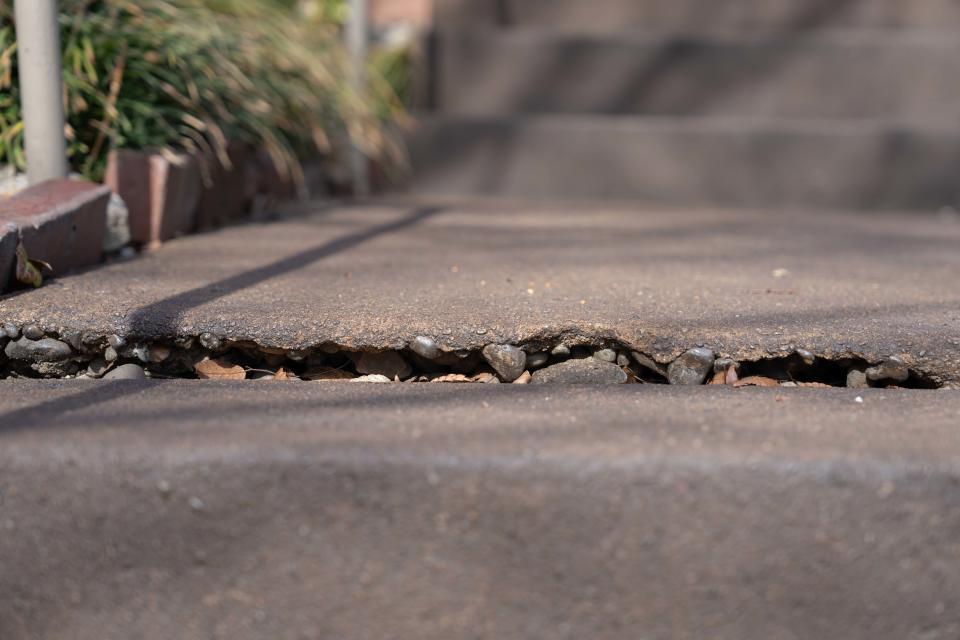
Old Louisville is under strict preservation requirements, meaning development and changes to homes must closely match the existing character of the area. The neighborhood has been credited with “the most extensive collection of restored Victorian homes in the country,” according to Louisville Tourism.
“It just astounds me that Louisville doesn't protect its neighborhoods like it should,” Vitale said.
She and other residents also mentioned concerns about how industrial traffic, and the speed of traffic on Oak Street overall, could impact local businesses that rely on foot traffic and safe walkability in the area.
While talking to residents near the corner of Oak and Brook streets, Courier Journal staff saw several heavy trucks rumble by — and watched multiple vehicles rush through a red light at the intersection.
Residents’ recent pushback isn’t the first time industrial traffic has been highlighted in the area. In 2000, a task force examining the Old Louisville and Limerick neighborhood plans called for a reduction in heavy truck traffic by establishing designated routes and “a program of signage and enforcement.”
‘You are out of here’
Debra Harlan doesn’t live in Old Louisville anymore.
But in “25 years on Oak Street, I would be awakened every morning at 4 a.m.,” she said, recalling garbage trucks and other industrial traffic “plowing” toward the expressway.
“They would hit a spot on Oak Street that was not level, and my whole house would just jump,” she said.
Harlan works in historic preservation, and “has been in enough basements and looked at enough foundations” to know some of the neighborhood’s historic homes are vulnerable.
Consistent vibrations could be contributing to some of the movement in these buildings, especially if they haven’t been well-maintained over time.
But Harlan also worries about what the trend in industrial traffic means for the health of Old Louisville residents.
About 15 years ago, she was diagnosed with breast cancer, which she attributes to environmental factors — not only the truck traffic on Oak Street, but also on nearby Interstate 65, as well as air pollution from industrial facilities in the area.
By Harlan’s count, four other residents on her block were also diagnosed with cancer over the years, including one of her close friends, who worked in real estate.
"She was the first person I saw after my diagnosis," Harlan said. "And she basically came over to my house, put a 'for sale' sign in the front yard and said, 'You are out of here. You are not going to go through what I went through.'"
It’s notoriously difficult to link specific cases of cancer or other illnesses to air pollution sources or other environmental factors. But data shows some of the risks facing the community.
The neighborhood surrounding this stretch of Oak Street generally falls in the 80th or 90th percentile nationally for diesel particulate matter, federal data shows.
Diesel exhaust is linked to lung cancer, heart disease and other health issues, according to the EPA. Heart disease along this area of Oak Street is in the 99th percentile nationally.
"You just can't have 40 or 50 semi trucks coming up and down your street on a daily basis for 25 years and not be affected by that," Harlan said.
Residents look to Metro Council for solutions
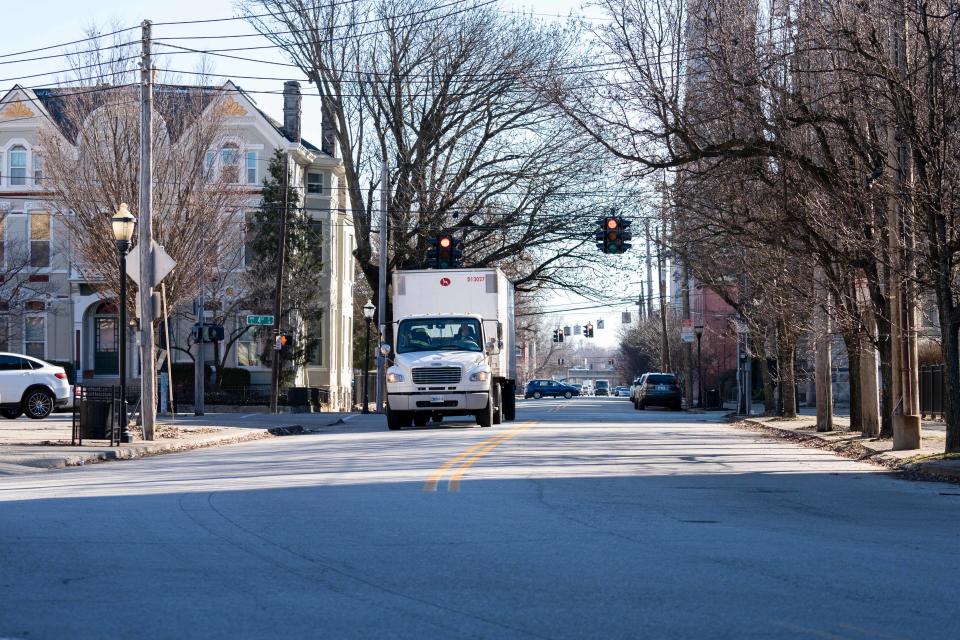
Vitale said she’s been in communication with several of the companies whose trucks run through Old Louisville.
Rumpke has been an "advocate" for the issue, she said, rerouting drivers where possible and making notable improvements.
"This issue remains a priority for Rumpke," Hillary Ladig, a spokesperson for the company, said in an email. "We continue to review routes and educate our team members and other waste companies about the importance of using 9th street as the primary route when traveling to and from our facility."
And Consolidated Grain and Barge Co., which operates a grain elevator off 15th Street, has also worked with the community to rein in drivers in Old Louisville. But since many of these drivers are third-party, grain trucks have largely continued their path through the neighborhood.
Already, a local ordinance restricts heavy truck traffic from using 11 different stretches of Louisville roadway, mostly downtown and reaching south into Old Louisville, on Brook, First and Fifth streets.
Vitale and others are hoping Metro Council will adopt some additions to this ordinance, including Oak and St. Catherine streets, but aren’t advocating for widespread restrictions on industrial traffic.
"We actually want to be conscientious of them and their business as well," Vitale said. "We can't just block everything."
A timeline for Councilman Baker's ordinance to extend heavy truck restrictions in Old Louisville is unclear, while Metro Council focuses on the upcoming public hearing to weigh Councilman Anthony Piagentini's removal from office.
But Baker highlighted the community's concerns, as well as concerns for infrastructure damage in a neighborhood not built for heavy industrial trucks.
"Ultimately, though, it's not about being anti-truck or anti-anything," Baker said. "It's all about just making our neighborhood safer."
Connor Giffin is an environmental reporter for The Courier Journal and a corps member with Report for America, a national service program that places journalists in local newsrooms to report on under-covered issues. The program funds up to half of corps members’ salaries, but requires a portion also be raised through local community fundraising. To support local environmental reporting in Kentucky, tax-deductible donations can be made at courier-journal.com/RFA.
Learn more about RFA at reportforamerica.org. Reach Connor directly at cgiffin@gannett.com or on X @byconnorgiffin.
This article originally appeared on Louisville Courier Journal: Traffic is shaking historic Old Louisville homes. Can a new law help?

